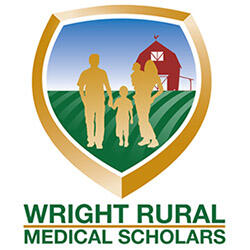
The Wright Rural Medical Scholars program (WRMS) strives to bolster the healthcare workforce in rural areas, particularly in rural West Central Ohio. To meet this goal, WRMS gives Boonshoft School of Medicine students opportunities to complete clinical experiences in the local area. WRMS follows in the footsteps of the Wright Rural Health Initiative, which has placed BSOM students in rural areas since 2013.
WRMS works in collaboration with the Wright State University Lake Campus, located in Celina on beautiful Grand Lake St. Marys, about 90 miles northwest of the Dayton Campus. The Lake Campus is Wright State’s only regional campus and aims to meet the educational needs of West Central Ohio residents.
The Wright Rural Medical Scholars program is funded by Ohio Area Health Education Center funds.
Mission
To develop and nurture physicians pursuing rural medical practice in Ohio.
Educational Opportunities
There are two ways to be involved with WRMS—the rural pathway or stand-alone rural rotations.
Rural Pathway
WRMS’s Rural Pathway is a more intensive experience for students interested in rural medicine and includes required clinical, scholarship, and extracurricular activities.
Stand-Alone Rural Experiences
Stand-alone rural experiences will also be available to students not involved with the rural track but who would still like some rural medicine exposure during their medical education.
News
Rural Medicine at BSOM in the News
- Grand Lake Health, Mercer Health honored at May 2024 graduation
- Read about WRHI’s addiction screening training for rural health professionals, Wright State University Newsroom, January 4, 2019.
- Read “Improving rural medicine” in the BSOM magazine, Vital Signs, Summer 2018
- Read "Med student experiences rural medicine," in the Daily Advocate, December 29, 2016.

